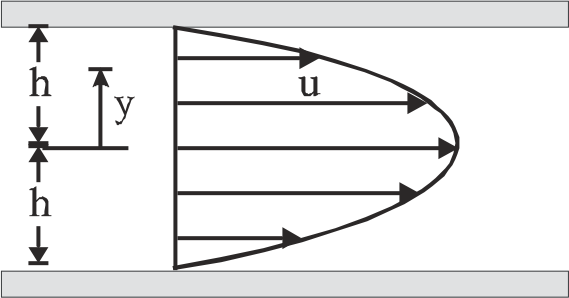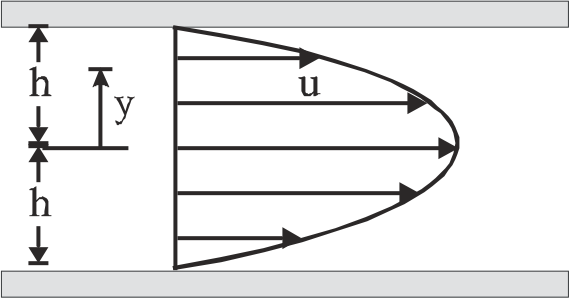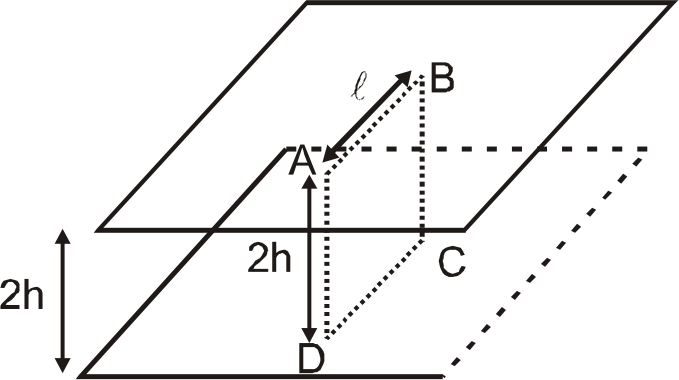The coefficient of viscosity of a fluid moving steadily between two surfaces is given by the formula,
where f is the frictional force on the fluid, A is an area in the fluid and is the velocity gradient inside the fluid at that area. The SI unit of viscosity coefficient is given as.
Nil, it is dimensionless constant
newtons
The correct Answer is:A
Units of
Topper's Solved these Questions
- BOOK - DINESH PUBLICATIONCHAPTER - SOME BASIC CONCEPTS OF CHEMISTRYEXERCISE - SELECTED STRIGHT OBJECTIVE TYPE MCQs42videos
SOME BASIC CONCEPTS OF CHEMISTRY
- BOOK - DINESH PUBLICATIONCHAPTER - SOME BASIC CONCEPTS OF CHEMISTRYEXERCISE - LINKED COMPREHENSION TYPE MCQs12videos
SOME BASIC CONCEPTS OF CHEMISTRY
- BOOK - DINESH PUBLICATIONCHAPTER - SOME BASIC CONCEPTS OF CHEMISTRYEXERCISE - ULTIMATE PREPARATORY PACKAGE20videos
SOME BASIC CONCEPTS OF CHEMISTRY
- BOOK - DINESH PUBLICATIONCHAPTER - SOLUTIONS EXERCISE - ULTIMATE PREPARATORY PACKAGE10videos
SOLUTIONS
- BOOK - DINESH PUBLICATIONCHAPTER - SURFACE CHEMISTRY EXERCISE - BRAIN STORMING MULTIPLE CHOICE QUESTIONS (MCQs)8videos
SURFACE CHEMISTRY
Similar Questions
If 1 newton tangential force is required to maintain the velocity gradient of 1ms−1//m between two parallel layers of liquid each of area 1 sq m, the coefficient of viscosity of liquid is said to be…………
View SolutionWhen a liquid flows in a tube, there is relative motion between adjacent layers of the liquid. This force is called the viscous force which tends to oppose the relative motion between the layers of the liquid. Newton was the first person to study the factors that govern the viscous force in a liquid. According to Newton’s law of viscous flow, the magnitude of the viscous force on a certain layer of a liquid is given by
F=−ηAdvdx
where A is the area of the layer dvdx is the velocity gradient at the layer and η is the coefficient of viscosity of the liquid.
If f is the frictional force between a solid sliding over another solid, and F is the viscous force when a liquid layer slides over another, then :View Solution
Knowledge Check
- Question 1 - Select One
The coefficient of viscosity (η) of a fluid moving steadily between two surface is given by the formula (f)=ηAdV/dx where f is the frictional force on the fluid, A is the area in the fluid, and dV/dx is velocity gradient inside the fluid at that area. The SI unit of viscosity is given as :
Akgm−1s−1BNm−2sCNilDNewtons - Question 2 - Select One
When a liquid flows in a tube, there is relative motion between adjacent layers of the liquid. This force is called the viscous force which tends to oppose the relative motion between the layers of the liquid. Newton was the first person to study the factors that govern the viscous force in a liquid. According to Newton’s law of viscous flow, the magnitude of the viscous force on a certain layer of a liquid is given by
F=−ηAdvdx
where A is the area of the layer dvdx is the velocity gradient at the layer and η is the coefficient of viscosity of the liquid.
The dimensional formula for the coefficient of viscosity is :A[ML−1T−1]B[MLT−1]C[ML−2T−2]D[ML−1T−2] - Question 3 - Select One
When a liquid flows in a tube, there is relative motion between adjacent layers of the liquid. This force is called the viscous force which tends to oppose the relative motion between the layers of the liquid. Newton was the first person to study the factors that govern the viscous force in a liquid. According to Newton’s law of viscous flow, the magnitude of the viscous force on a certain layer of a liquid is given by
F=−ηAdvdx
where A is the area of the layer dvdx is the velocity gradient at the layer and η is the coefficient of viscosity of the liquid.
A river is 5 m deep. The velocity of water on its surface is 2ms−1 If the coefficient of viscosity of water is 10−3Nsm−2 , the viscous force per unit area is :A10−4Nm−2B2×10−4Nm−2C4×10−4Nm−2D5×10−4Nm−2.
The velocity distribution for the flow of a Newtonian fluid between two wide, parallel plates is given by the equation

u=3V2[1−(yh)2]
where V is the mean velocity. The fluid has coefficient of viscosity η Answer the following 3 questions for this situation.
View SolutionThe velocity distribution for the flow of a Newtonian fluid between two wide, parallel plates is given by the equation

u=3V2[1−(yh)2]
where V is the mean velocity. The fluid has coefficient of viscosity η Answer the following 3 questions for this situation.
Shear stress acting on the bottom wall isView SolutionA liquid whose coefficient of viscosity is η flows on a horizontal surface. Let dx represent the vertical distance between two layers of liquid and dv represent the difference in the velocities of the two layers. Then the quantity η(dv/dx) has the same dimensions as:
View SolutionThe velocity distribution for the flow of a Newtonian fluid between two wide, parallel plates is given by the equation

u=3V2[1−(yh)2]
where V is the mean velocity. The fluid has coefficient of viscosity η Answer the following 3 questions for this situation.
Consider a rectangular cross section of dimensions l x 2h as shown. The side AB is parallel to the plates. Volume flow rate through this cross section is
 View Solution
View SolutionWhen an object moves through a fluid, as when a ball falls through air or a glass sphere falls through water te fluid exerts a viscous foce F on the object this force tends to slow the object for a small sphere of radius r moving is given by stoke's law, Fw=6πηrv. in this formula η in the coefficient of viscosity of the fluid which is the proportionality constant that determines how much tangential force is required to move a fluid layer at a constant speed v, when the layer has an area A and is located a perpendicular distance z from and immobile surface. the magnitude of the force is given by F=ηAv/z. For a viscous fluid to move from location 2 to location 1 along 2 must exceed that at location 1, poiseuilles's law given the volumes flow rate Q that results from such a pressure difference P2−P1. The flow rate of expressed by the formula Q=πR4(P2−P1)8ηL poiseuille's law remains valid as long as the fluid flow is laminar. For a sfficiently high speed however the flow becomes turbulent flow is laminar as long as the reynolds number is less than approximately 2000. This number is given by the formula Re=2¯vρRη In which ¯v is the average speed ρ is the density η is the coefficient of viscosity of the fluid and R is the radius of the pipe. Take the density of water to be ρ=1000kg/m3
Q. Blood vessel is 0.10 m in length and has a radius of 1.5×10−2m blood flows at rate of 10−7m3/s through this vessel. The pressure difference that must be maintained in this flow between the two ends of the vessel is 20 Pa what is the viscosity sufficient of blood?View Solution

